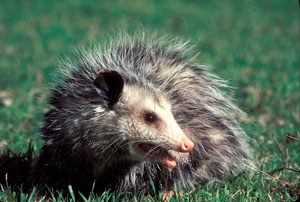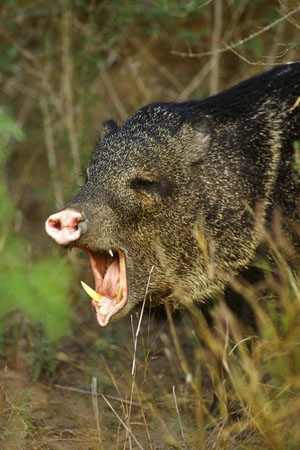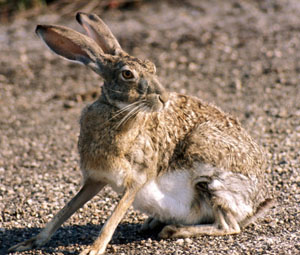Smaller Mammals
Native peoples of the South Texas Plains dined on a smorgasbord of small to medium-sized mammals including rabbits, raccoons, opossums, badgers, shrews, moles, skunks, and even collared peccaries (javelina). Carnivores such as coyote, wolf and possibly bobcat also were hunted in prehistoric times, although their remains have not been found in the same quantities as their smaller brethren. Many of the animals provided both food and fur, not to mention sharp teeth which may have been used for scarifiers, tools, or totems.
Among the species identified at archeological sites now inundated by the Choke Canyon Reservoir and at the Hinojosa site in Jim Wells County are blacktailed jackrabbit (Lepus californicus ), desert cottontail rabbit (Sylvilagus audobonii), least shrew (Cryptotis parva), eastern mole (Scalopus aquaticus), skunk (Mephitis) and collared peccary or javelina (Dicotyles torquatus or D. tajacu).
Small mammals contributed a large part of the native diet in earlier times as well. Paleoindian peoples living along Coleto Creek in Goliad County, at the site now known as Berger Bluff, included bones of rabbit, gopher, and raccoon, as well as a variety of rodents. Archeologist Ken Brown interpreted one feature—a dense deposit of bones of small mammal bone and other small creatures, such as frogs, lizards snakes, and birds— to be the remains of a human latrine.
Evidence that carnivores, including coyote and graywolf, were exploited has been found at the Hinojosa site, although not in large quantities. Bone thought to be bobcat was found at 41LK201, and possible remains of dog were reported at two Nueces County sites.
The presence of collared peccary in several Choke Canyon sites and at the Hinojosa site casts doubt on the notion that these pig-like creatures were introduced by the Spanish during historic times. Although admittedly scarce, the evidence indicates they have been in the region for at least 600 years if not earlier.

Shy, nocturnal opossums likely were trapped rather than hunted directly. Photo courtesy Texas Parks and Wildlife Department.
|

